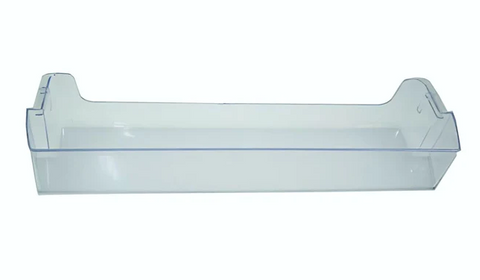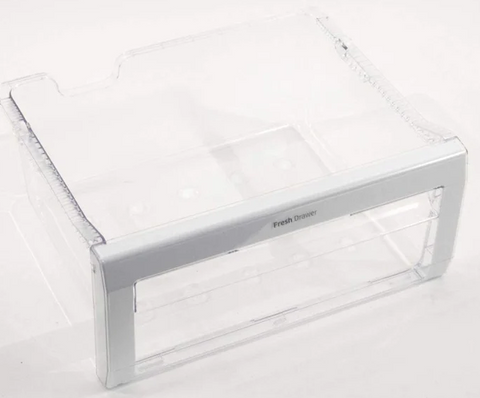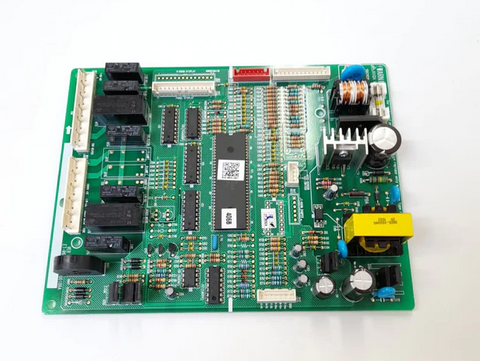A Fridge is the silent hero of any kitchen. It keeps our food fresh, our drinks cold, and our lives running smoothly. But like any hero, fridges need attention and maintenance. Parts break down, things get lost, and sometimes we just want an upgrade. This blog covers the essentials of fridge/freezer parts so you can keep your trusty food chiller in top shape.
Fridge Freezer Water Filters

Clean drinking water is a luxury many of us take for granted. Fridge water filters ensure that the water from your dispenser and ice maker is pristine.
-
Importance:
Filters remove impurities like chlorine, lead, and other contaminants This improves water taste and protects your health.
-
Types:
Many types exist. Choose the one your fridge model uses.
-
Replacement:
Change them every six months or as per manufacturer guidelines. Clogged filters can reduce water flow or cause a bad taste.
Freezer Trays

Freezer trays make hot summer days bearable. But they can also get lost or cracked.
-
Types:
Classic plastic freezer trays are cheap but can break easily.
Silicone trays are more flexible and durable.
Fancy trays come in fun shapes for themed drinks.
-
Considerations:
Think about the size of ice cubes you prefer. Some fridge models have built-in trays, so replacements need to be the right fit.
Door Parts
Fridge doors are hardworking. Over time, parts can wear or break.
-
Handles:
These get a lot of use! Look for sturdy handles based on the style of your fridge.
-
Gaskets:
These ensure the fridge door seals tightly to keep cold air in. Damaged gaskets cause your fridge to work harder, wasting energy. Replace them if they're torn or loose.
-
Hinges:
Worn hinges can cause your fridge door to sag or not close completely. Look these up based on your exact fridge model.
-
Shelves and Bins:
These provide interior organization. Replace cracked or missing fridge shelves and bins to keep your fridge tidy.
Fridge/Freezer Shelves

Freezers need structure too! fridge/freezer Shelves help optimize space and separate food types.
-
Types:
Wire shelves are standard and offer good airflow, but small items might fall through.
Glass shelves are sturdy and easy to clean.
Slide-out shelves provide convenient access.
-
Placement:
Consider what you store. Make height adjustments to fit in all those frozen pizzas and bulky ice cream containers.
Fans
Fridge/freezer Fans are the unsung heroes of refrigeration. They circulate the cold air within the fridge and freezer
-
Evaporator Fan:
This fan pushes cold air over the evaporator coils. A malfunctioning fan means warmer temperatures and potential food spoilage.
-
Condenser Fan:
This fan cools the condenser coils. If it gets clogged with dust, your fridge has to work harder, potentially leading to breakdowns.
Trays, Bins, and Drawers

These unsung organizational freezer trays, bins, and drawers keep your fridge life sane.
-
Crisper Drawers:
These have adjustable humidity to optimize the storage of fruits and vegetables.
-
Deli Drawers:
The perfect spot for cheeses and cured meats.
-
Multipurpose Bins:
These can stash anything from snacks to leftovers to condiments.
-
Materials:
Most are plastic, but some newer fridges offer glass or even metal options.
Motors
The fridge motor is the heart of a refrigerator. It powers the compressor that makes cold air.
-
Failure:
Motor failure usually means it's time for a new fridge, as replacement is often expensive.
-
Warning Signs:
Loud noises, insufficient cooling, or frequent on/off cycles could indicate a motor issue. Get a technician to diagnose it.
Fan Blades
Fan blades are attached to the evaporator or condenser fan motors, helping move air.
-
Damage:
Bent or broken blades make fans less effective and noisy. Replacement is usually straightforward.
-
Ice build-up:
Ice on fan blades can throw them off balance and damage the motor. Defrost if this happens.
Control Boards

The fridge control board is your fridge's brain. It manages temperatures, defrost cycles, and various functions.
Troubleshooting and Care
Even with the best parts, fridges sometimes misbehave. Here are some common issues and what to do:
Fridge Isn't Cold Enough
- Dirty Coils: Clean dust bunnies off the condenser coils (usually on the back or under the fridge). Good airflow is essential for cooling.
- Blocked Vents: Make sure food isn't blocking airflow vents inside the fridge and freezer.
- Thermostat Trouble: Check your temperature settings. If those are fine, the thermostat itself might be faulty.
Water Filter Issues
- Slow Flow: A clogged filter is the likely culprit. Replace it!
- Leaks: Check if the filter is installed correctly. A loose fit or damaged filter housing can cause leaks.
Noisy Fridge
- Evaporator Fan: A rattling noise might mean the fan blade is hitting ice or something is loose. Inspect and fix.
- Condenser Fan: If it's loud or squeaky, it might need cleaning or lubrication.
- Compressor: Loud knocking or buzzing from the compressor can be serious – call a technician.
Door Problems
- Won't Close Tightly: Check the gasket for damage, clean it, and make sure nothing is blocking the door's path.
- Squeaky Hinges: A little food-safe lubricant usually fixes this.
Freezer Frost Build-Up
- Air Leaks: Check the door seal. Warm air getting in causes condensation and then frost.
- Frequent Door Opening: Minimize how often you open the freezer door, especially on humid days.
- Malfunctions: A faulty defrost system can cause frost issues too. Call a technician in this case.
Care Tips
- Clean Regularly: Wipe spills quickly. Periodically do a deeper clean of shelves, bins, and the interior.
- Coil Cleaning: Clean the condenser coils every few months to prevent overworking.
- Gasket Care: Clean the door gasket regularly and watch for damage.
- Leveling: Make sure your fridge is level so doors close properly.
- Don't Overload: Cramming too much in restricts airflow and makes your fridge work harder.
FAQ
Where to Buy Replacement Fridge Shelves
Look online first. Start with the fridge maker's site. They have parts that match. If not there, visit the Steve Appliances website. Always search with your fridge's model number. This makes sure the shelf fits.
How to Measure for Replacement Fridge Shelves
Take out the old shelf first. If it's broken, fit it together to measure it. Use a tape for width and depth. Also, measure the space between shelf supports. Write these numbers down. They help you find the right shelf.
How to Clean Fridge Shelves
Take shelves out first. Soak them in soapy water. Scrub with a soft cloth. Don't use harsh cleaners. They can scratch. Rinse well. Dry with a towel. For tough stains, use baking soda and water. Put it on the stain. Wait an hour. Scrub, then rinse. Dry shelves before putting them back.
A Final Word
Your trusty fridge contains a surprising amount of replaceable parts and fixable problems. With a bit of knowledge and maintenance, you can keep your appliance running smoothly for years to come. And remember, if something seems beyond a DIY fix, call in a professional technician for help.

